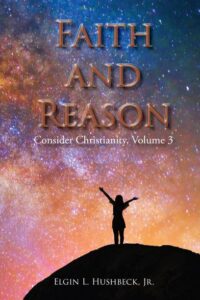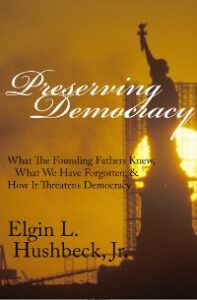Energion Roundtable Week 8 Judges
This week’s Energion Roundtable question with Bob Cornwall, Arthur Sido, Allan R. Bevere, Joel Watts, and myself is:
One of the ways in which a president shapes the future of the country is through appointments to the judiciary, and especially the Supreme Court. How do you see each candidate shaping the future of the court, and why is this important? (If you are supporting a particular candidate, focus on that one.)
While much of the debate surrounding the election is, for obvious reasons, focused on the economy, a president is likely to have much more of a lasting impact on the country in the areas of foreign policy and judicial appointments, particularly to the Supreme Court. This is especially true with this election for two reasons. The first is that currently there four “liberal” justices, four “conservative” justices and Anthony Kennedy who frequently acts as the swing vote. The second is that it is likely that in the next 4 years, several Supreme Court justices are likely to retire. Thus the next president may very well have the ability to shift the balance of the court one way or the other for years, if not decades to come.
The terms “Liberal” and “Conservative” in the last paragraph are in quotes because, while commonly used, they are not the most accurate, for it implies that the judges are ruling based on political positions. While this is sometimes the case, more often than not the different decisions come from different views of the Constitution.
What is commonly labeled “conservative” is more accurately called a Strict Constructionist view, which is a view that seeks to understand the law and Constitution as it was written and passed. On the other hand, the “liberal” view is sees the Constitution as a Living Document, and it is the task of the judge to understand the Constitution in light of the advancements of modern culture.
While both might seem like viable approaches, as I explain in detail in Preserving Democracy, there are key differences between them. With Strict Constructionism the judge is bound by the law and/or Constitution. With the Living Document view, the judge is not bound and can reinterpret the Constitution in light of changes in society, which, not too surprisingly, tend to mirror the judge’s political views.
Supporters of the Living Document view claim this ability to reinterpret is necessary in order to for the Constitution to stay current. Strict Constructionists argue that if a change is needed, that is what the amendment process is for.
I believe there are several major problems with the Living Document view. The greatest is that since it not only allows, but encourages judges to change the Constitution by reinterpreting it, it places the judge above, not below the Constitution, and thereby undermines the rule of law.
This means that judges are not just ruling based on what the law and Constitution say but instead they are making policy decisions and based on their policy decisions they tell us what the Constitution now means. This leads to a politicization of the Courts that is most visible when it comes to Supreme Court nominees. At one time judicial nominations, even for the Supreme Court, were hardly even noticed. Now they are major political battles, with judges being nominated and confirmed, not based on judicial temperament, but on the likelihood that they will vote “correctly” on particular political issues.
Because of the difference between the two positions, the left with its predominate support of the Living Document view has been far more political. After all, many of the advances of liberalism have been brought about through the imposition of courts rather than the democratic process. This can also be seen in the fact that while several nominees of Republican Presidents have turned out to be liberal over the last ½ century, the reverse has not occurred. This was also seen in the fact that while there was a lot of discussion about whether Kennedy or Roberts might join with the liberals (as Roberts eventually did) there was no serious thought that one of the liberal justices might join with the conservatives.
Given this liberal dominance among the Living Document view, Strict Constructionists are at times falsely labeled as conservative activists. This is because a Strict Constructionist view would overturn many of the rulings based in a Living Document view and these are normally of a more liberal bent. But, to pick the most obvious example, overturning Roe v Wade and returning the matter to the states were it was before the ruling would not be judicial activism. The Constitution does not address the matter one way or the other. So overturning it in favor of a judicial ban on all abortion would be judicial activism in the opposite direction.
The real danger with the Living Document view is that it grounds the Constitution, not in the text, but in the current majority of the Supreme Court, and majorities change. Thus even if you like the direction courts in recent decades, what the court has the power to grant, the court has the power to take away just as quickly.
So for me this is easy decision. I believe the Constitution means what is says, and if society changes to the point that it needs revisions, there is an amendment process. Obama, on the other hand, has appointed two Living Document supporters who are solid liberal votes, but this only preserved the tenuous balance of the court; one that is sure to change once Kennedy retires. Romney says that he will appoint strict constructionists. I hope that he does.
I would like to see the court return to ruling on what the law and the constitution says such that the political views of the judge do not matter. My fear is that one side or the other will achieve a majority of judges on their side who support the Living Document view, and the Constitution simply becomes pretext for their political goals. With Obama that will be certain, with Romney, there is at least a chance to turn it around.

